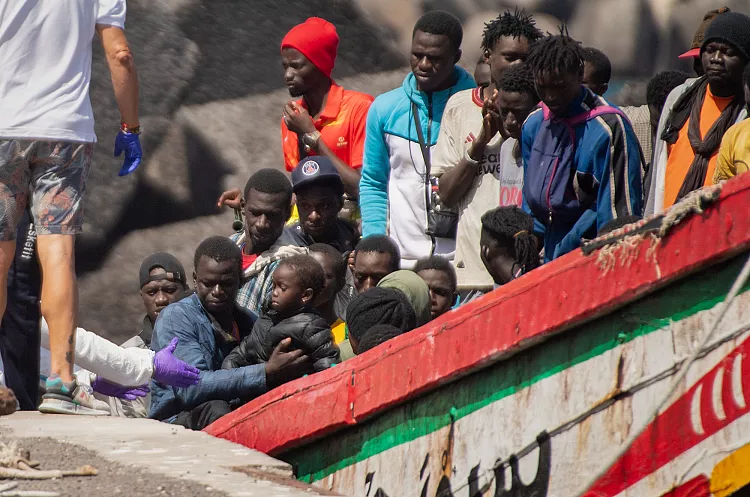Nearly 200 migrants have been stopped by the Senegalese navy while trying to travel across the Atlantic Ocean toward Europe. On Wednesday, the authorities confirmed that a total of 201 migrants were intercepted in western Senegal. This happened as many people continue to risk their lives on this dangerous sea route in hopes of reaching the Canary Islands in Spain.
The operation was carried out by the Senegalese marines based in Foundiougne, in the Fatick region. According to the army, 69 people were caught on land, while 132 others were stopped at sea. They were traveling in a small wooden boat known as a pirogue and were found in the Saloum Delta area on Tuesday night.
Even though the overall number of people migrating to Europe has been going down, the Atlantic route has become more popular again since 2020. Official numbers show that nearly 47,000 people arrived in the Canary Islands in 2024, up from around 40,000 in 2023. The route is extremely dangerous, and many migrants die before reaching their destination.
How dangerous is the Atlantic Ocean route for migrants?
The Atlantic route is one of the deadliest in the world. There are no exact numbers for how many people have died, but reports from migrant rights groups suggest that thousands may have lost their lives this year alone.
Those arrested include men, women, and children from various West African countries. The Saloum Delta has become a common starting point for illegal migration, even though the risks are high. In the past, most of the migrants were young men. But now, aid workers in the Canary Islands are seeing more women and children arriving.
In 2023, the European Union signed a deal worth 210 million euros with Mauritania to stop smugglers from sending boats across the sea. However, this agreement has not done much to reduce the number of migrants reaching Spain so far.
In Senegal, migration attempts increase during the winter months when the ocean waves are less strong. But many people are still choosing to travel at other times of the year, despite the danger.
Some migrant boats go missing for months. When found, they are often drifting far from their original route, sometimes as far away as the Caribbean or Latin America. Sadly, many of these boats contain only the remains of the people who were on board.
Originally, this migration route was mostly used by people from West African countries escaping poverty or violence. But since last year, people from countries like Pakistan, Bangladesh, Yemen, Syria, and Afghanistan have also started using the same fishing boats to try and reach Europe.

